Located in the valleys of four important rivers Sinú, San Jorge, Magdalena and Nechí, the Zenu Culture It was at the time one of the most evolved of the Colombian lands. Learn interesting details of this ancient indigenous culture!
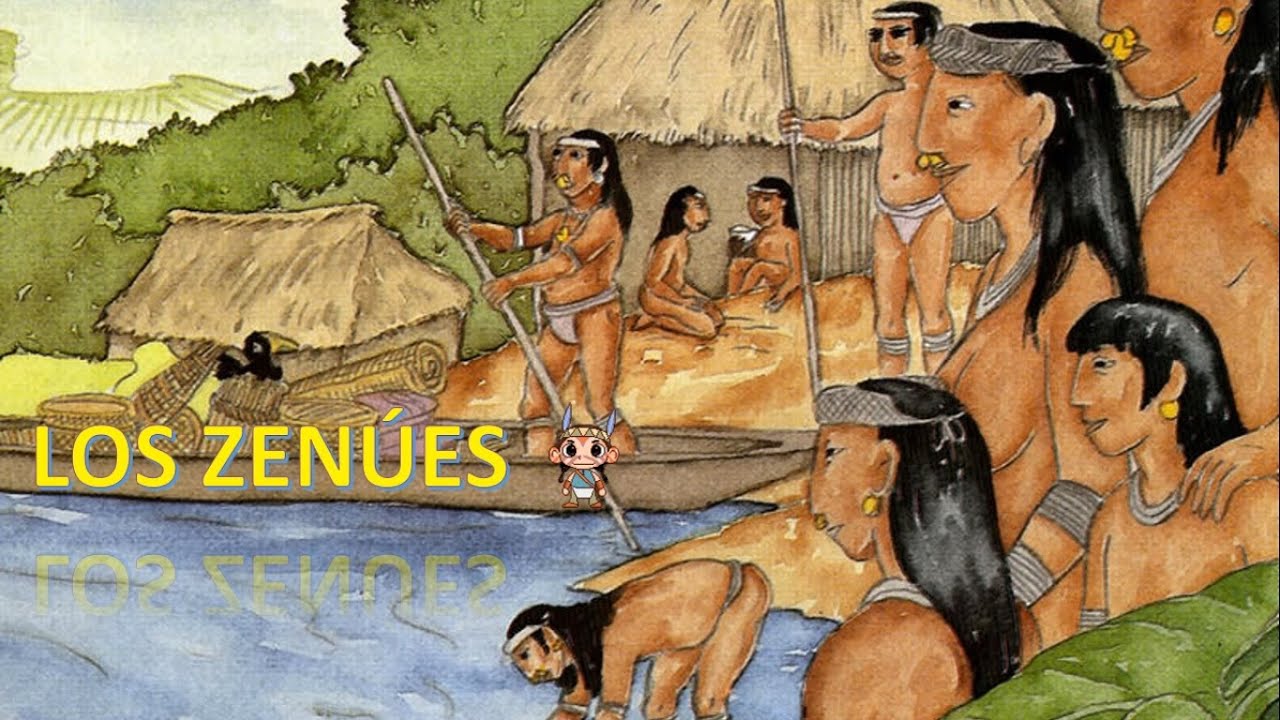
The Zenu culture
The Zenú or Sinú culture is native to the lands that today make up part of the Colombian nation. Its territory was located exactly between the valleys of the Sinú and San Jorge rivers and the Caribbean coast adjacent to the Gulf of Morrosquillo, today Córdoba and Sucre.
Etymology
The term Zenú seems to be related to the name that the natives of these tribes gave to the Sinú River. On the other hand, it is also associated with the different names assigned to the regions into which this territory was divided prior to the arrival of the Europeans: Finzenú, Panzenú and Zenufana.
Added to all this, the most important and populated settlement of this culture, located near a large body of water called the Betancí swamp in Finzenú, being known as Zenú.
Unfortunately, the documents written by the Spanish chroniclers of the XNUMXth century do not make any type of reference or explanation about the origin of the name of this ancient culture, so it is difficult to determine if it was a name designated by the Europeans or if the indigenous people really call themselves Zenúes. .
In dates after 1550, when the Spaniards settled in the new continent began the distribution and organization of the natives in encomiendas, a figure or institution that grouped the aborigines as non-voluntary labor.
In the different documents of this type of organization, the culture or tribe to which the native belonged was not specified, but they were assigned the name of the encomendero for whom they were forced to work. Many of these towns called them by the name of the leader or cacique in charge of delivering tributes to foreigners.
History of the Zenú culture
Its existence dates back to 200 BC and it is estimated that its almost total disappearance was around 1600 AD. The chronicles of the new world written by the Spanish in the XNUMXth century mention very little about the history of the Zenú culture, however, they did review those that still existed, their customs, location, economic activities, etc.
The Zenú carried out great works for the administration of water, but they stood out in the production of gold pieces, which were later buried with the deceased and which attracted the attention of many. These people in the heart of the Colombian Caribbean zone, located right between the Sinú and San Jorge rivers, for hundreds of years, saw their legacy disappear and blatantly disrespect their traditions.
The tombs of this ancient culture were looted and their grave goods unscrupulously stolen. The Zenú sadly understood that their ancestors and deceased were adrift, having to fend for themselves, without the precious objects that were useful in the passage to the other world.
The culture was already in decline prior to the appearance of the European conquerors, but with their presence, it almost completely disappeared.
Before the conquest
This area of Colombian territory was a crowded place where a great variety of ethnic groups lived. In the case of the Zenú society, it was divided into one hundred and three chiefdoms, divided into three provinces that maintained constant exchanges, especially in the economic aspect. These were:
- Finzenú, located in the areas on the Sinú River. These groups stood out in the elaboration of baskets, mats and other similar objects, also in weaving.
- Panzenú, communities that occupied the land on the San Jorge River, responsible for harvesting and food production in general.
- Zenufana, was the province that was located between the Cauca and Nechí rivers, they were mainly dedicated to goldsmithing.
After the Spanish conquest
Towards the XV century, according to the Spanish chronicles, the political organization of the Zenúes did not exist, surviving two cacicazgos. In 1533, the conquistador Pedro de Heredia founded the fortified post of Cartagena de Indias. Realizing the strategic value of a deep-water coastline for ship ports, the city began to prosper as a slave port and a foothold for the Spanish Crown's conquest of the New World.
Zenú's proximity to valuable metal deposits deep in the tropical heart of the Middle Magdalena River made them easy prey for marauders. These communities became encomiendas and around the XNUMXth century the different cities that are still located in this region were erected.
Later, towards the XNUMXth century, the missionaries arrived, cattle ranches were established and an incessant exploitation of the resources that belonged to the territory that originally belonged to the indigenous people is maintained.
- River valley communities
The Zenú prior to the conquest already experienced a decline in their population, even for reasons that do not have a precise explanation.
These communities lived in higher areas in the vicinity of Ayapel, Montelíbano and Betanci, being discovered by the conquerors in their explorations through the Sinú River. Each of the provinces at the time of the conquest had its established leaders and social organization:
- The Sinú valley was called Finzenú, capital, Zenú: governed by a woman, known as Totó. The most important sacred place of her and the cemetery where the remains of the dignitaries rest was in Zenú, near the Betanci reservoir.
- Panzenú, located in the San Jorge basin, had Ayapel as its capital and political center, its ruler was known as Yapel.
- Zenufana, located between the Cauca and Nechí rivers, where gold was produced, was ruled by Nutibar.
Chief Zenúfana was considered a mythical figure, who ruled the entire lower area of Cauca and Nechí, organizing the entire territory of Gran Zenú in political, economic and religious aspects.
This was maintained before and during the time of the conquest, enacting laws and regulations that were in force until they were located by foreigners and Pedro de Heredia invaded their nation.
- Zenúes in the mountains of San Jacinto
The native groups of these areas were closely related to the activities of goldsmithing, trade and fishing, living in the areas of the San Jacinto mountains and on the banks of the Magdalena River, before and during the time of the conquest.
Among the most significant differences with respect to the Zenú of the lowlands, was the use of burial mounds and cemeteries. Their deceased rested in large containers buried under the floor of their homes. The goldsmiths of this area used gold alloys, with abundant copper, for objects and pieces of massive and common use.
They generally had a golden appearance despite the copper, for this they were subjected to a chemical heating procedure, which dissolved the copper on the surface and left the piece golden. However, this color tended to wear off over time, and the piece exhibited an oxidized copper hue.
Among the most common pieces you could find: circular and semicircular earrings, rings and earrings, figures of people with luxurious outfits, heads, bells and some beings from wildlife. Their activities continued even after the conquest, however, when their nation was found and invaded, a large part of the pieces disappeared, as well as the gold work.
Decline of the Zenú culture
The world of the native Zenú was forever changed when the first Europeans arrived on their ships to map and explore this remote coastline. They saw in these shores the possibility of an important seaport in the Americas and the possibility of innumerable riches in their lands.
Around 1533, when the city of Cartagena de Indias was founded, the Europeans had no doubts about all the wealth behind the indigenous burials located towards the Sinú River area. They organized multiple exploratory trips, whose main objective was the looting of the burial mounds.
With the arrival of the Europeans and the invasion of the Zenú nation, the colonization of their territory and the domain of the tribes was a fact, subjected to excessive taxes, organized as forced labor for forced labor and the diseases that came with them. invaders from the west, the Zenú population decreased alarmingly and with it their entire culture disappeared.
Around 1773 the King of Spain ordered that some eighty-three thousand hectares in San Andrés de Sotavento be a Zenú reserve, however, this disappeared in 1905 by order of the National Assembly of Colombia.
Since then, the existing native population has been fighting for the restoration of this reserve, a process that bore fruit in 1990, when San Andrés de Sotavento once again held this title.
However, the provision only covered an area of ten thousand hectares, which later were a little more than twenty thousand, where there are about thirty thousand inhabitants who still try to preserve the ancient traditions.
Language of the Zenues
This Amerindian people originally spoke the Guajiba or Guamacó language, currently their descendants use Spanish as their language.
At the end of the 1770th century, Guamacó was spoken in the communities known as Cereté and Alto San. However, the Spanish crown prohibited the use of the different indigenous dialects around XNUMX, this being the cause of its total extinction.
Of this ancient language, only a few names of geographical places, flora, fauna and some words of its own colloquial language of the coast-savanna survive. The language of the Zenú culture after the Spanish conquest gradually disappeared, to the point that it was considered an extinct language.
However, the Colombian Ministry of Culture states that currently there are about 14% of individuals who speak this native language, being at great risk of total extinction. Currently there are programs and projects aimed at recovering this dialect.
Social organization
When the Spanish conquerors discovered the Zenú lands, they were divided into three provinces or cacicazgos, the Panzenú in the San Jorge area, the Zenúfana in the Henchí and lower Cauca valleys, and the Finzenú in the middle and lower Sinú valleys.
The communities were led by a cacique, either male or female. This was in charge of governing and controlling the Zenú society, in all areas.
Despite the fact that each cacicazgo had a chief, however, the groups maintained a constant exchange, especially in the economic aspect, since the products of some were required by the others and through the exchange everyone could obtain what they needed and not they produced.
The chiefs had various responsibilities in all areas of community life. Political, religious and economic duties, for example: punish and sanction in situations that warrant it, solve the inconveniences and conflicts of the population, grant permission for marriage unions, etc.
The Zenú villages were made up of large, organized and neat houses. They were built on terraces or platforms, above the water level. When one of their leaders died, they were buried on these terraces, their bodies richly adorned with jewels and gold pieces, according to the position they hold, the higher the rank, the greater the clothing and the greater the height of the mound.
The hierarchy is matrilineal, that is to say, the offspring is defined by the maternal line, but also many aspects depend on and revolve around the man, for example, families reside in the paternal home. Outbreeding was allowed, that is, marriage between individuals of different races.
Women in the Zenú culture
In this ancient culture, women had an important role in society, representing fertility, wisdom and respect.
For this reason, in artistic expressions it is not difficult to find female characters. Commonly made of clay, these figures were added to the different objects that were gathered in the tombs, as a representation of the fertility of human beings and the soil.
Placing these small images in the tombs was associated with conception and rebirth, of course in the other world, just like the seeds in the ground that germinate and grow.
Funeral ceremonies are important for the community, therefore, it is very common for everyone to attend bringing music and dance for the occasion. The mound that is made on the tomb in a rounded way generally tries to imitate the maternal womb, the place where the pregnancy takes place, until childbirth. This is crowned with a tree that is adorned with golden bells, placed on each branch.
At funerals, women and men with authority in the community used golden breastplates, an emblem of the virility of the male sex and the stage of pregnancy of women. Conception and birth were very important within the Zenú culture, which is why women were very important in the social and political life of this society.
Around the XNUMXth century, when the conquerors found the Zenúes, one of the provinces and religious center known as Finzenú was led by Toto, who was in charge of a considerable number of nearby communities.
Economy
The lands occupied by the Zenú had extremely important water sources throughout this area of the Caribbean coast, so the economic and cultural development of those who lived on its shores was promising, sparking activities that were essential for their subsistence. such as agriculture and fishing.
The Zenúes developed different economic activities, standing out in some specifically. One of the main and most important is agriculture, growing fundamental products in their diet such as corn, chili, cassava, beans, pumpkin and yams. Among the most harvested and consumed fruits are watermelon, melon, mango, corozo, guava and soursop.
Another of the economic activities of the Zenú culture is fishing. The different types of fish, the babilla or alligator and the hicotea turtle, were important products in each household. In many communities, turtle farming was practiced in small numbers.
They also stood out in weaving and basketry, for which they made sure to maintain the harvest of some types of palms, grasses and vines, destined for the elaboration of handicrafts and construction work. They stood out for making beautiful and useful pieces braided or woven from fibers extracted from plants. Hats, baskets and baskets, fans, mats, bags, vases, among other things, were woven for daily use and commercial exchange.
At present, these objects are still made with arrow and napa cane fibers, many emblematic pieces of Colombian lands and that were born from the ancient Zenú culture, are exported to other borders. The vueltiao hat, for example, is an emblematic accessory of the Colombian nation, being typical of the Caribbean savannahs, especially Córdoba, Sucre and Bolívar.
It is made with fiber obtained from the cane arrow palm, a plant that is also used to fence houses, make fishing arrows and as an ornament. The fiber is placed in the sun so that it loses moisture and is completely dry, turning a very light cream color, almost white.
Once the fiber dries, it is darkened with mud, to weave the hat in two colors. Among the types of fabric we find the so-called spider pints, cricket breast, etc. Originally the strips for the ends of the edges of the hat were made by children, thus contributing to the work and learning the tradition. There are communities that also stood out for weaving large and wonderful hammocks on large looms.
In some communities, the hunting of small rodents known as picures or sereques and some aquatic birds such as the cormorant and various types of turkeys was practiced.
mythology and religion
The beliefs of the Zenú culture focus, as in other original cultures, on superior beings, creators of the cosmos, the world and all living beings. In this case, the native Zenués affirmed that at the beginning of time everything was solitude, silence and cold, there were only two deities, considered the creator gods.
These divine figures, creators of everything we know, including the first Zenúes who inhabited the Gran Zenú, were called Mexion, very similar to the Zenúes physically, but resplendent and brilliant, their partner was Manexca, a goddess with only one breast, of great beauty
Like many ancient aboriginal cultures, the native Zenú revered and honored nature and its great power. They considered that life on earth was a gift and death was expected without fear and with good spirits, because in the afterlife the spirit had no obligations with a physical body and therefore life on the other plane was calm and pleasant. .
On the other hand, death was a topic of great importance and transcendence for this society, it was seen as a normal moment in the life of any human being, having as a custom to exalt it with the necessary ceremonies and celebrations, especially to direct the soul of the deceased. .
In a Zenú dwelling it was not uncommon to find a kind of mezzanine or mezzanine made of wood or wattle to hold a coffin securely. It is for many these days, something strange and a little unpleasant to keep a drawer or urn at home, but this was part of Zenú daily life, since it is normal to find it as part of the ornaments and household items.
You never know when death knocks on the door, so be prepared. The box or coffin was considered for public use and was lent to whoever needed it in a moment of need. Of course, the coffin will later be made with similar specifications to the one that was received on loan, as a sign of respect and gratitude to the family that generously lent it.
The deceased person will be placed inside the coffin, well accommodated, with eyes and mouth closed, since an inappropriate position or gesture implies that the soul remains wandering, may take a family member or is grieving for something unfinished or inappropriate that occurred in their environment. closest.
With the body placed correctly in the drawer, his relatives walk him around his house and nearby areas, so that he remembers those places and "picks up his steps in this world." The urn is usually transported on the shoulders of the closest friends and relatives, who after making the tour of the deceased's home, was taken to the place where he would be buried.
Later with the adoption of Christian beliefs and the mixture of these with the old beliefs, before going to the burial place, they go through the church. In the house of the deceased, the family places a kind of altar, which will be decorated with flowers, some candles, a glass of water and cotton. From that glass it is said, the spirit of the deceased will drink water the nine days of the novena, to say goodbye definitively to this world.
To take the coffin to the burial place, two rows are organized with the assistants, imitating a path, everyone will carry lighted candles so that this light assures the deceased a good spiritual journey, closer to the god Zenú, Tií.
The individual will be buried with his head towards the west, where it gets dark, with their respective objects and corresponding craft pieces. The earth deposited on the box inside the hole will be compacted with three wooden rods known as rammers. In this case, two female rammers and one male rammer are required, which produce drum-like sounds when struck on the floor.
This sound is accompanied by phrases and words dedicated to the deceased or that allude to death. In the same way, it is accompanied by a dance to the rhythm of that beating, considered an important part of the ceremony, since death is only the beginning of a new life, a rebirth and is a reason for joy. The body of the deceased rests from everything he lived in this world and his spirit is reborn on another plane.
Custom dictates that those who carry and bury him drink traditional drinks, such as masato, chicha, ñeque or chirrinche. Once the funeral is over and the deceased is buried, the finish or appearance of the tomb depends on the level of authority or position of the indigenous within their community, because depending on their importance or hierarchy, the tumult or mound of earth that covers the drawer will have a specific size.
If the native was a cacique or some important member of the community, the mound of earth is totally different from that of the common inhabitant, since it is usually larger and higher. The Zenúes believe that death is a fact that is extolled with special rituals and ceremonies, generally known as Dispatch of the soul or novena. This novena is held in the home of the deceased, in the company of family, friends and acquaintances, for nine days.
The purpose of performing this ritual is to support relatives in seeking consolation for their loss, carrying out different activities that will allow them to cope with the mourning, for example, sharing food and drinks such as coffee, masato, tapetusa and chicha, in addition to spending a while between games of chance and small talk.
In the novenarios the women usually talk, the men play, narrate stories, myths, legends and jokes and the younger ones generally play and have fun, while everyone eats and drinks what is offered to them. It is a tradition to look for a healer, who is in charge of requesting and mediating for the spirit of the deceased, so that it is purified and can enter the sacred mountain. The nine nights are hard work for the rezandero, until he manages to deliver the deceased correctly.
In gratitude for their work, the rezandero will be attended by the family of the deceased, they will be given food and drink, since this ritual is carried out in three schedules that should not be changed. The days are carried out punctually by the rezandero at 7:00 pm, 11:00 pm and 2:00 am
The community collaborates with food for the family of the deceased during those nine days, these include cassava, yams, bananas and coffee. The dispatch or farewell of the spirit occurs on the ninth day of death at midnight. The rezandero will recite his prayers while he vacates and disarms the elaborate altar in the house. Each family member will extinguish a candle as a symbol of the departure of the deceased from this world of the living, in the end everything remains in the dark and the relevant prayers are recited.
The doors of the house are kept open and clear, so that the spirit leaves the place. The natives affirm that whoever interrupts the deceased's departure for any reason may face illness or be taken to the world of the dead by the spirit.
Zenú technology and culture
In addition to maintaining a rigid social and economic structure at the time, the Zenú were characterized by being a fairly advanced culture. Outstanding artists and engineers, as they are described by many specialists in the area, however they were innovative and effective in many other areas. Below you can discover many of his skills:
Hydraulic engineer
The heart of their land was a delta product of the existence of four rivers, San Jorge, Sinú, Cauca and Magdalena, which had the peculiarity of frequently flooding during the rainy season. The Zenú culture demonstrated great skill in the construction, administration and management of different irrigation systems.
The Zenú became experts in the design and construction of canals to control floods. They built a very ingenious and efficient system, capable of bringing water to more than six hundred thousand hectares for more than a thousand years. The soil left behind by digging the trenches was used to build terraces where houses and farms were located.
This visible network of land and water, where daily life took place, became an important part of the Zenú culture which is often reflected in the design of the objects they created. This network of canals built by the Zenúes was extensive and made it possible to control the constant flooding of the rivers, directing the excess of their waters to natural outlets, taking advantage of the sediment for this, achieving an impressive and effective river communications network.
The excavation of large canals further ensured that in the rainy seasons, the waters flowed steadily into the river currents. The excess land resulting from the excavations was used to form high terraces, where agriculture was practiced throughout the year.
As you can deduce, this system allowed the Zenú to take better advantage of the spaces, retaking areas that were previously abandoned by floods and rising waters. On the other hand, in these channels a great variety of aquatic species proliferate, turtles, caimans and caimans, in addition to many types of fish, which were an important source of food for the communities.
This ingenious way of taking advantage of their land, allowing them to live and plant on land that, thanks to the floods, was not suitable for that purpose, gave them the well-deserved title of hydraulic engineers of their time.
Terraces where crops of cassava, corn, cotton abounded. beans, etc, in addition to the possibility of abundant fishing, guaranteed that these numerous communities could subsist.
goldsmith
The skill of these ancient goldsmiths is surprising even today, their false filigree work, a delicate braided gold thread, expertly cast in wax, are great pieces of the Zenú culture.
The traditional design of Zenú is a kind of reflection of their environment and lifestyle, surrounded by canals they lived in the valleys along the Gulf of Morrosquillo, they used to work and decorate their pieces as a kind of wicker pattern, typical of their fishing nets, textiles, pottery, basketry, and gold objects and artifacts.
Gold was also worked in other ways, hammered into plates and reliefs, creating ornaments that were usually made of an alloy containing a high grade of this metal.
A typical characteristic of the objects produced by the Zenú in the San Jacinto mountains is the representation of different scenes of natural life, birds sitting on a branch, feline figures, alligators and amphibians. Many times the figures of men were added claws, nails, fangs, etc.
Birds, alligators, fish, deer, blue-billed curassow, and other mountain and swamp wildlife, which were also food sources, were often depicted in gold ornaments, perhaps as a display of appreciation, affection and veneration for the earth and nature.
Some of the gold figures of the animal world were transformed into pendants and ornaments that were placed at the end of the canes to embellish them. They also made nose rings or earrings for the nose, pectorals, pins, rings and earrings. In addition to very realistic and other more stylized figures of people in simple and common poses and activities: musicians with instruments, sitting on chairs, standing, with vegetables or fruits, etc.
Many of the beautiful pieces were buried with their dead, according to the tradition of this native culture. Generally this was done in canals which were then covered with large mounds of earth, making them an easy target for grave robbers, pirates and adventurers who constantly pillaged the Caribbean coast and islands.
No one really knows where the Zenú found the gold and when work began with it, perfecting it until it reached the pieces that still amaze the entire world, since it is estimated that the culture prevailed for about two thousand years.
Ceramics
The pottery of this native culture is characterized by anthropomorphic and zoomorphic figures, very well elaborated and full of details, similar to sculptures. They used different materials, techniques, styles and shapes. The pieces were generally for daily and domestic use, the most elaborate were generally used in ceremonies and rituals.
The pottery had ornaments and decorations, these according to the use for which it was intended. The most common types of decoration were:
- incised decoration
- dotted decoration
- Geometric figure painting: this type of decoration was generally in red and black, with a cream-colored background.
The most common figures and pieces made by Zenú artisans are:
- Tall cups with a bell-shaped base.
- Statuettes of women with long skirts, bare torso and tattooed shoulders and breasts.
- Jingle bells
- zoomorphic whistles
- Figures of pregnant women
- Animals
The ceramic samples of the Zenú culture represent artistic pieces that generate a lot of interest regardless of their usefulness. They are pieces that have great importance and preference in pre-Hispanic art.
Many of these pieces can be seen in the collections of the "Gold Museum" of the Banco de la República in Bogotá and Cartagena de Indias, being a demonstration of the greatness of the art of the original Colombian cultures, especially the Zenú culture.
Zenú petroglyphs
San Jacinto and San Juan Nepomuceno are two municipalities in the department of Bolívar, which among other things are known for being the place where some archaeological pieces survive that can be considered treasures of the Zenú culture.
A legacy hidden in the bowels of the jungle, giant rocks that tower over the trees, the living testimony of ancient civilizations in which different scenes and geometric figures can be seen. These paintings and engravings, known as petroglyphs, were made on large stones dating back to 4.000 BC and are considered one of the oldest works of this type in America.
In these Colombian municipalities, several archaeological zones can be seen that have representative pieces of the Zenú or Sinú culture. Considered the most important, the pieces on the section of the Arroyo Rastro, in the municipality of San Juan Nepomuceno, show the face of a Zenú leader, who has on the other faces, which many researchers presume symbolize the ancestors of that cacique.
San Jacinto
San Jacinto, approximately one hundred kilometers from Cartagena de Indias, has a history and a heritage of varied and interesting crafts and music, for those who suppose that in this town they can only find hammocks, backpacks and many bagpipers armed with maracas and drums, it is not so. , is a community where there is much to discover.
It is known as the land of the Big Hammock, famous for its textiles since ancient times, when it was the home of one of the oldest cultures in America, the Zenúes. However, it is also a point of interest for those who enjoy sites of archaeological interest.
The Community Museum of San Jacinto, Bolívar, is a space for culture in this municipality that began operating in the XNUMXs, primarily as a Municipal Library project.
However, not only reading was brought together in this space, painting, dance and archeology were also integrated into this idea. Currently, the Community Museum exhibits utensils and pieces made of ceramics, quite old, which are presumed to come from 4000 BC. On the other hand, very close to the town, hidden in lands of thick vegetation, almost jungle, there are two places that many lovers of outdoor life and lovers of native cultures do not fail to visit:
- Rastro Creek Petroglyphs
Many make the route on foot from the access point known as the Conejitos neighborhood, which translates into a little more than two hours walking, for those who do not like this adventure in a vehicle it can take about twenty minutes, depending on the weather of the day The place is marked with metal signs and drawings of handicrafts with the name of Petroglyphs, Arroyo Rastro.
After traveling a good distance and leaving behind the farm called La Nasa, you will find a piece of land that has a stream that you must cross to reach a place where the immense rocks rise, with carvings made by the ancient Zenúes.
In the Arroyo Rastro, you can see megaliths, monuments made of large, uncut stone blocks, some hidden from the naked eye.
In these you can see some petroglyphs carved on the surface, others have faded over the years. These drawings show images of some native caciques, with their ornaments and headdresses, as well as other faces.
- The Jaguar Leap
This place of archaeological treasures is located about twenty minutes from San Jacinto, in the municipality of San Juan Nepomuceno. It is known as El Salto del Jaguar, as the large stones have marks very similar to the tracks of the claws of a jaguar.
The immense and smooth stones resemble imposing walls crowned by figures that imitate the shape of certain species of animals and that are complemented by other drawings of the native Zenúes, throughout the entire length of the stone.
They are places that are very little explored, therefore, the tranquility of the environment, which is only animated by the happy sounds of birds and insects, is not a surprise. They are unconventional places that offer an admirable and grandiose work for those who like original cultures and their archaeological pieces.
Museo del Oro Zenu
The Banco de la República Cultural Center in Cartagena has three spaces: the Bartolemé Calvo Library, the Zenú Gold Museum and the Banco República building.
The Zenú Gold Museum, also known as the Regional Museum of Zenú Culture, was inaugurated in March 1982, displaying at its opening an exhibition of some seven hundred pieces, where more than five hundred are goldsmiths.
Its most recent renovation was in 2006, currently having 902 archaeological pieces, included in:
- Metal objects: 747
- Ceramic objects: 105
- Bone objects: 11
- Shell Items: 34
- Pieces of ceramic pieces: 5
Hammered gold objects in plates, bells, headdresses and ceremonial figures adorn the colonial stone walls of this space in Cartagena.
We invite you to consult other links on our blog that may be of interest to you:
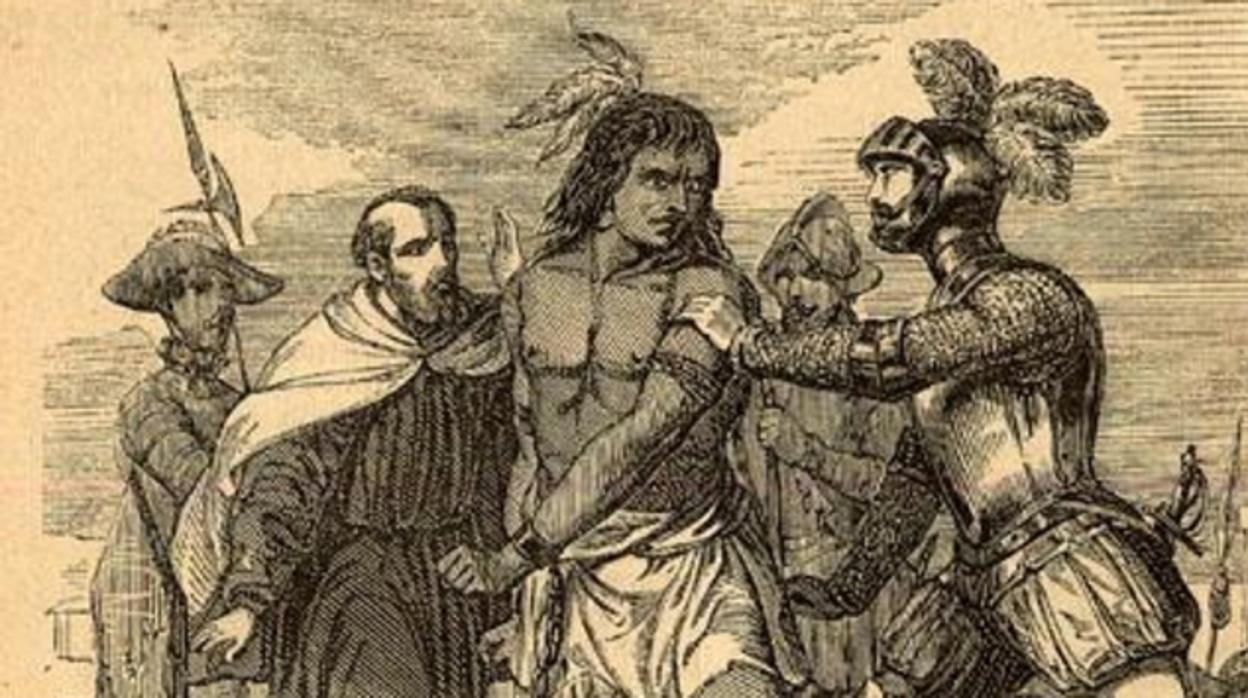
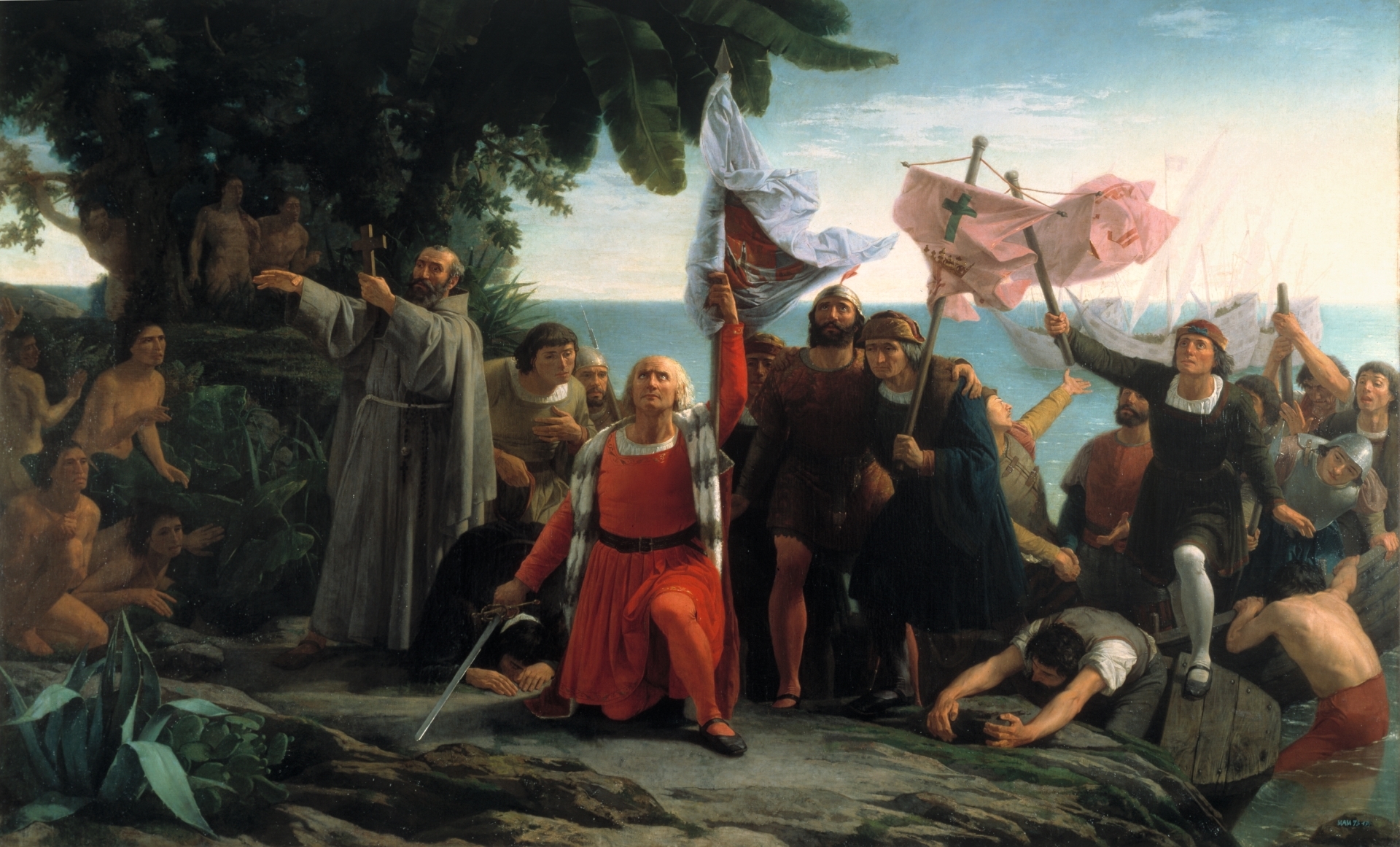
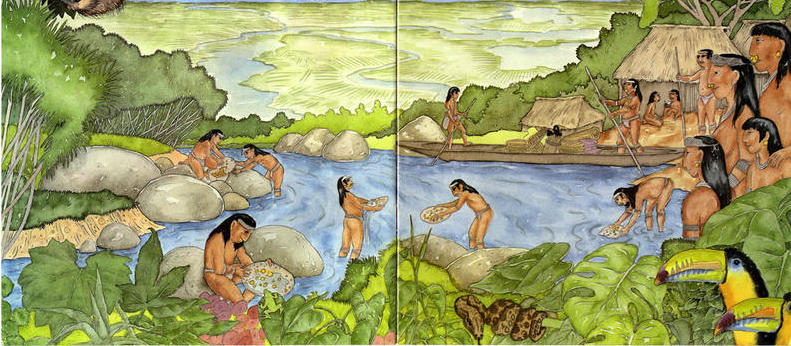
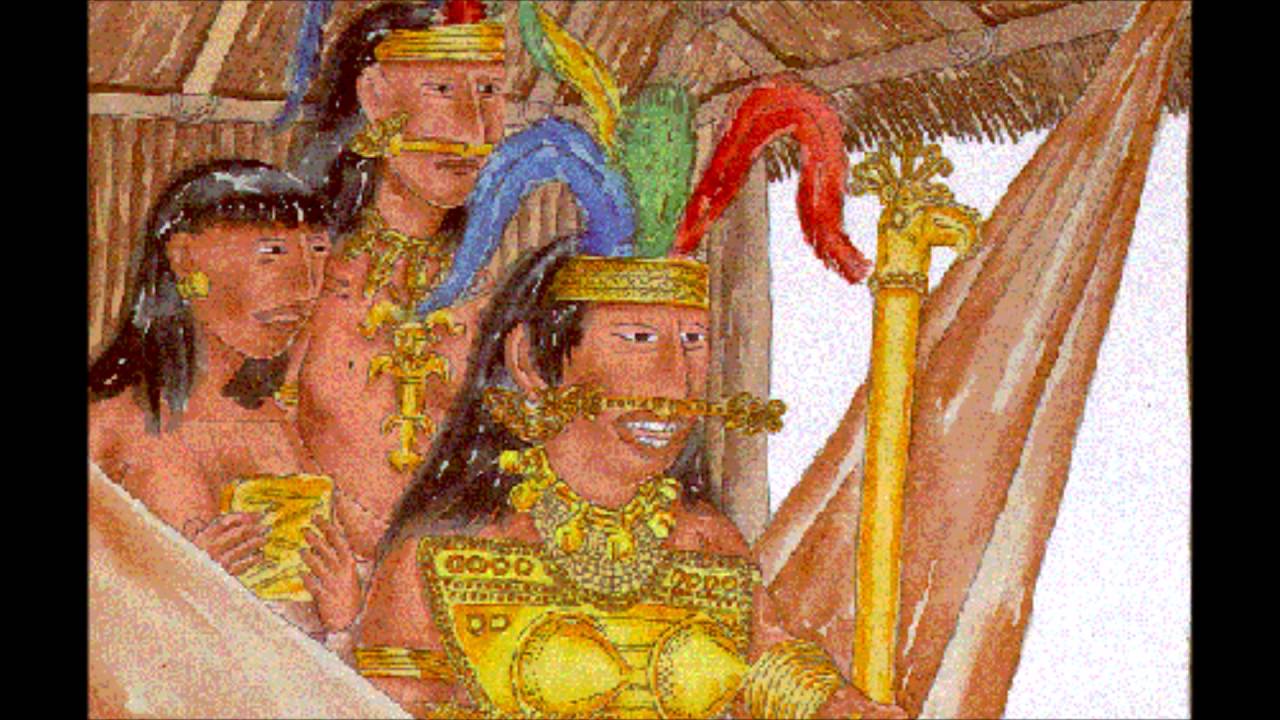

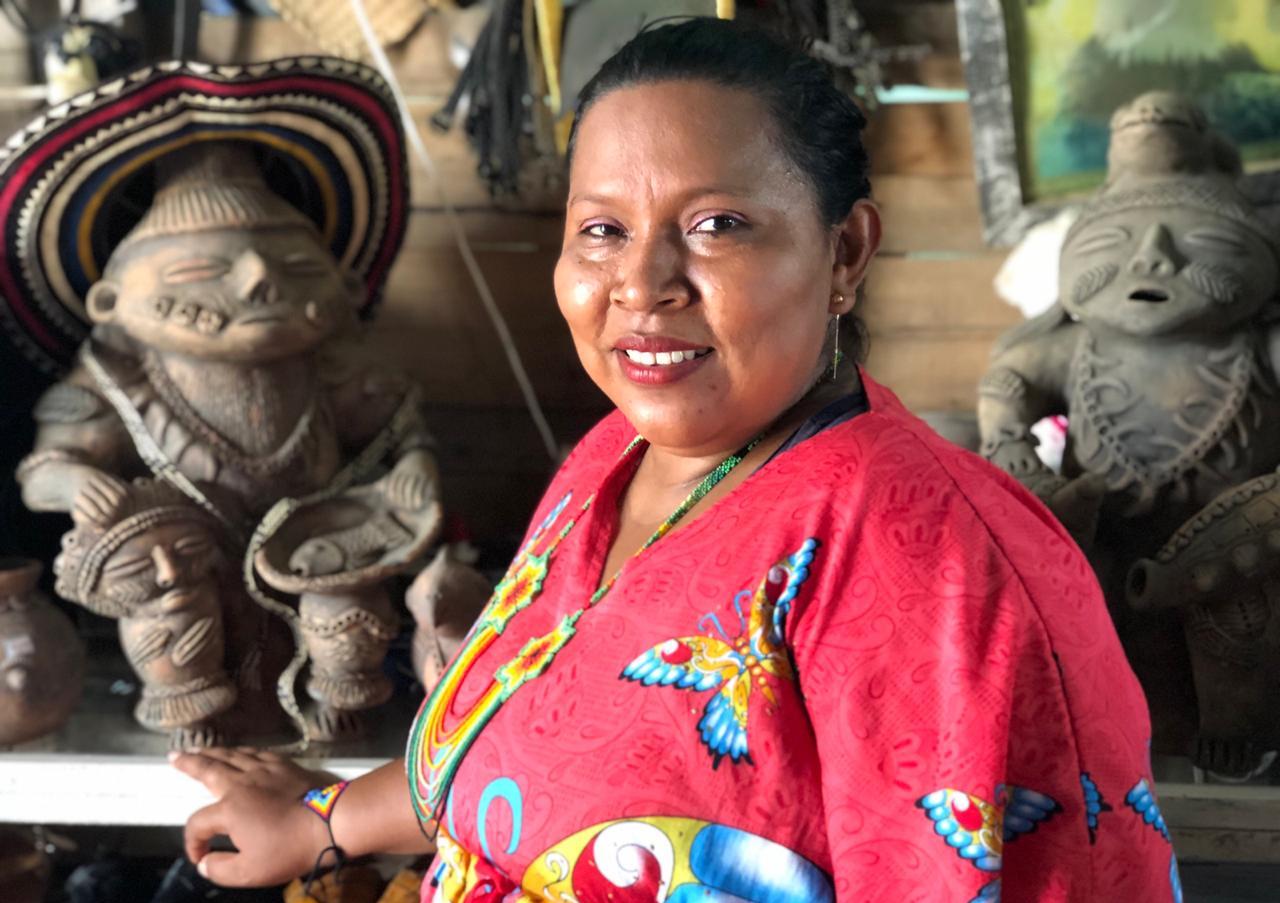
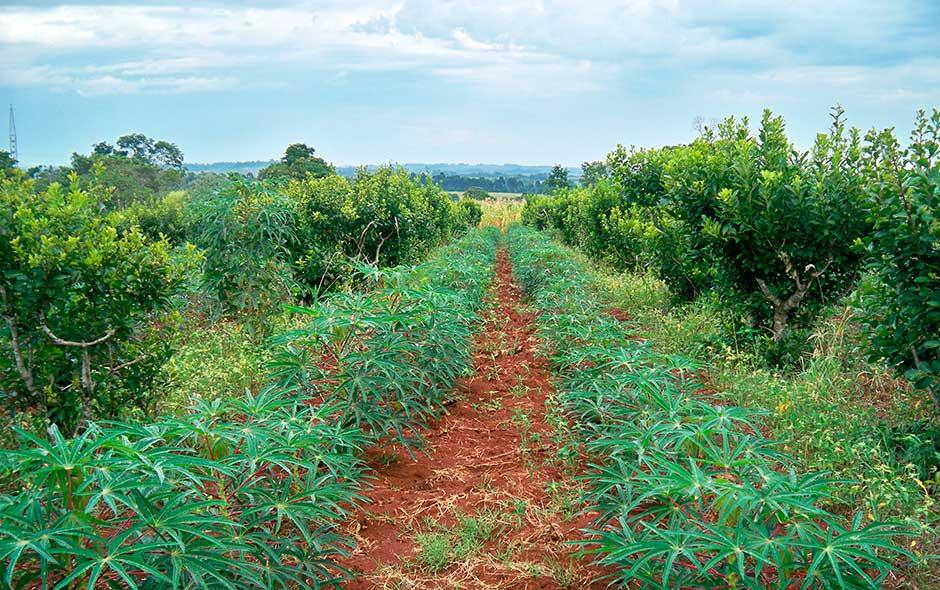


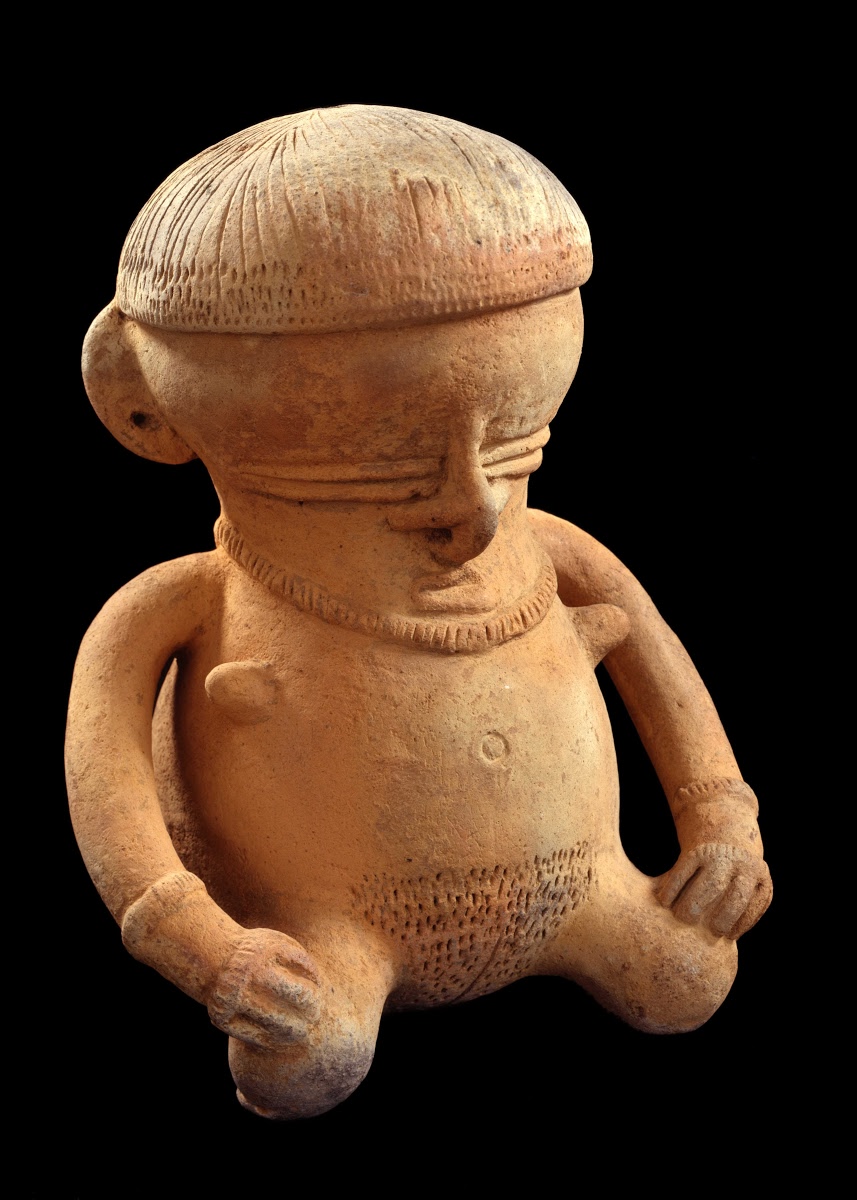
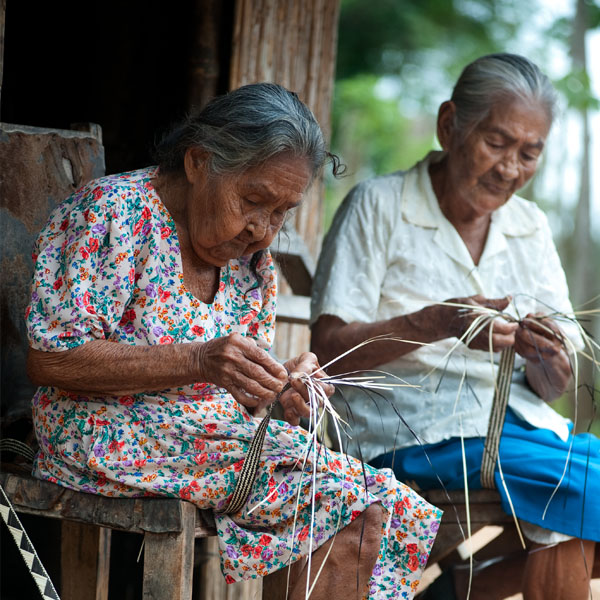
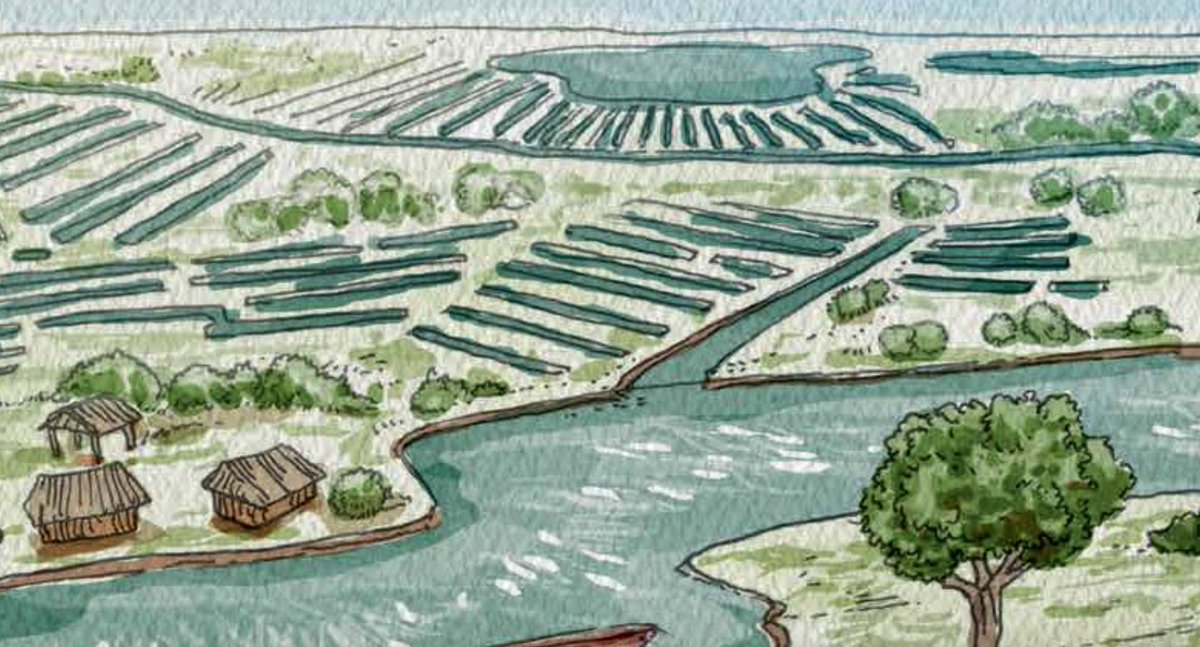

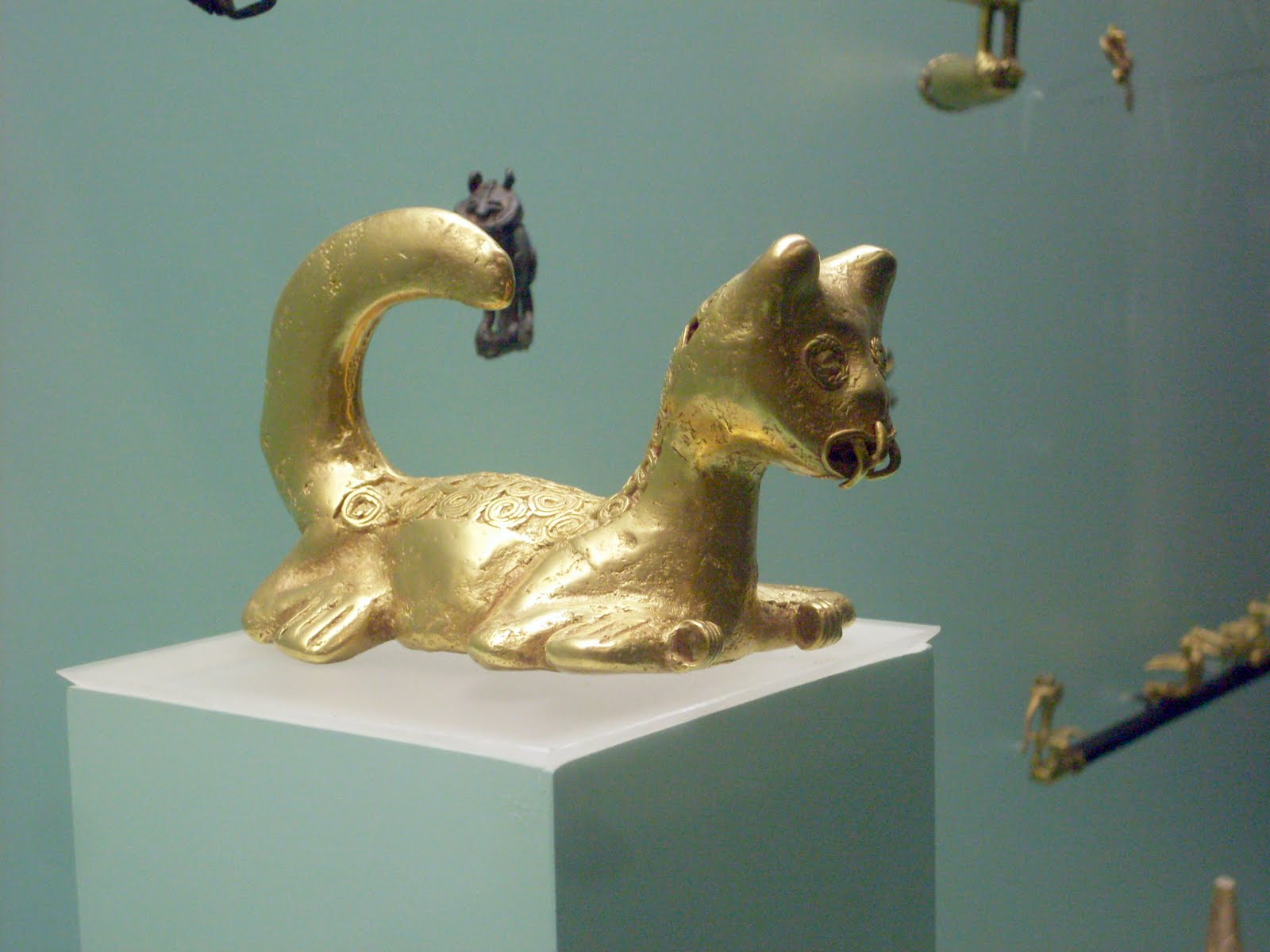

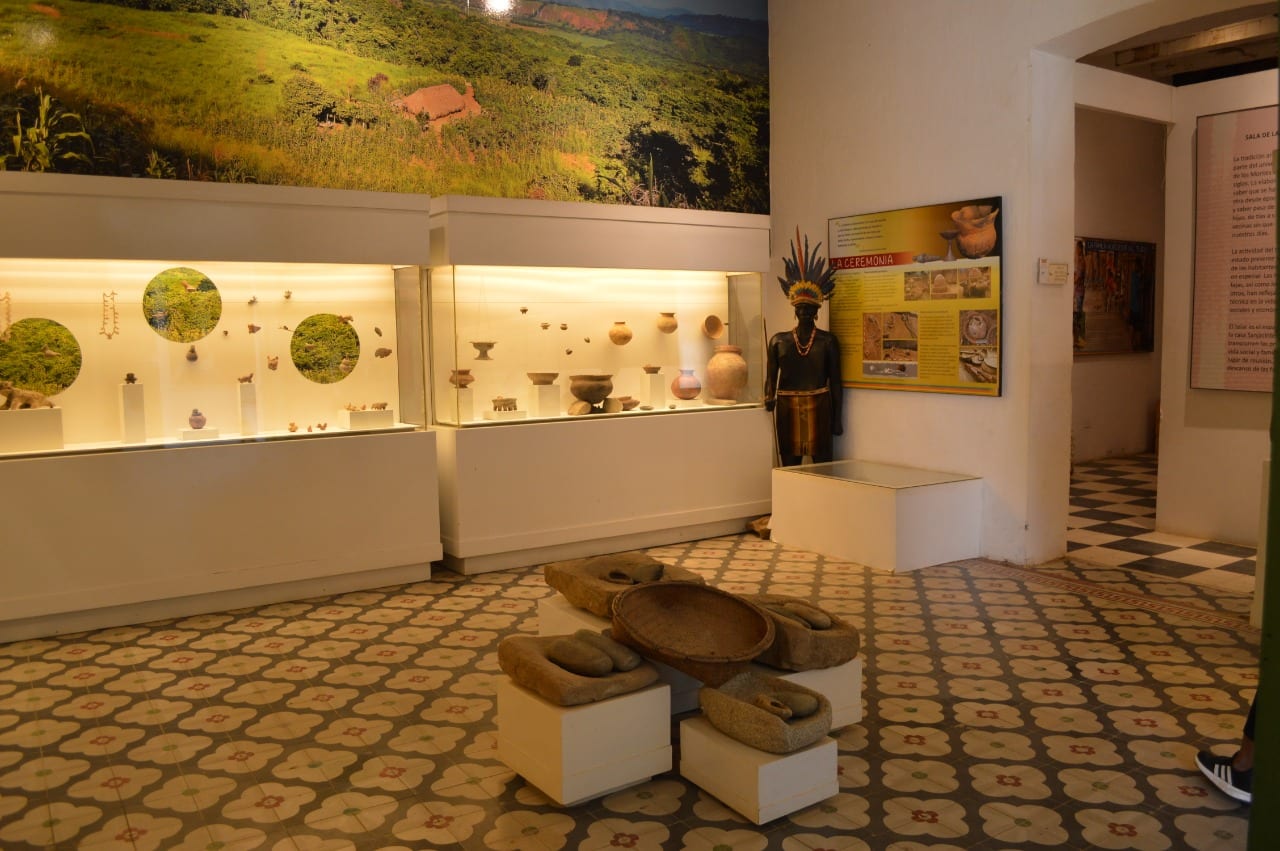
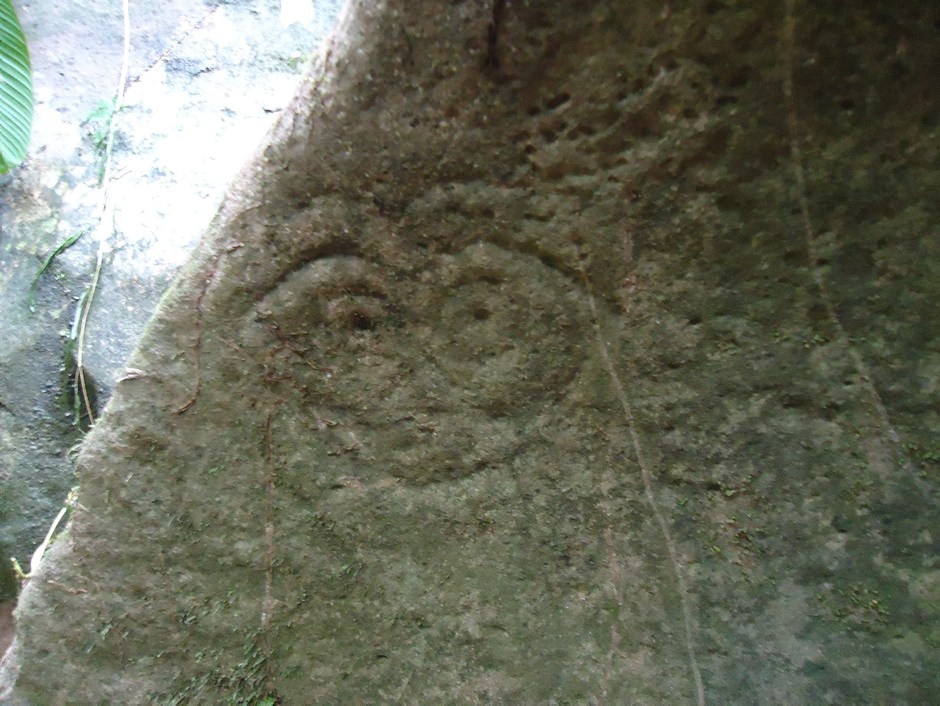
I liked the experience of the site it helped me I recommend it if you want to know about the petroglyphs